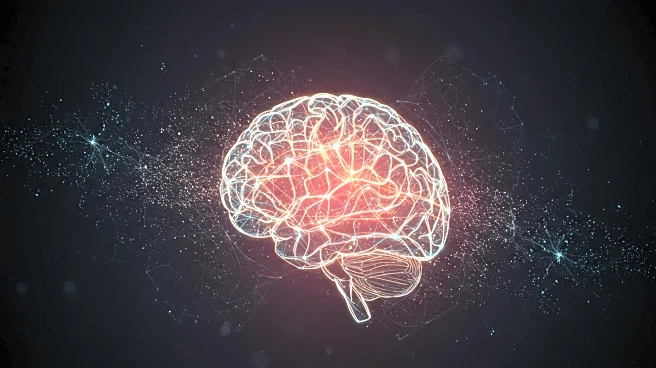What's Happening?
A study published in Nature Communications explores the coupling between tract reachability and cortical geometry in the human brain. Using datasets from the Human Connectome Project and IMAGEN, researchers analyzed MRI data to understand the relationship between brain structure and function. The study involved 968 subjects from the HCP dataset and 661 participants from the IMAGEN dataset, focusing on the geometric eigenmodes of the cortical surface and tract reachability maps. The research aims to quantify the coupling strength between individual white matter tracts and cortical geometric eigenmodes, providing insights into brain connectivity and individual variability in psychological and behavioral traits.
Why It's Important?
Understanding the coupling between brain tract reachability and cortical geometry is crucial for advancing knowledge in neuroscience and psychology. This research could lead to better predictions of high-risk behaviors and psychopathology symptoms, offering potential applications in mental health diagnostics and personalized medicine. By mapping brain connectivity patterns, scientists can gain insights into the biological basis of individual variability, which may inform treatment strategies for psychiatric disorders. The study also highlights the importance of large-scale neuroimaging-genetics cohort studies in uncovering complex brain-behavior relationships.
What's Next?
Future research will focus on expanding the datasets and refining the models to improve the accuracy of predictions related to behavior and psychopathology. The study's findings could lead to the development of new diagnostic tools and interventions for mental health conditions. Researchers may also explore the heritability of tract-geometry coupling, examining genetic influences on brain connectivity. As the field progresses, collaborations between neuroscience, genetics, and psychology will be essential to fully understand the implications of these findings.
Beyond the Headlines
The study raises ethical considerations regarding the use of neuroimaging data for predicting behavior and mental health outcomes. Ensuring informed consent and data privacy is paramount. Additionally, the cultural and societal implications of using brain connectivity patterns for diagnostics must be carefully considered, as they may affect perceptions of mental health and individual identity. Long-term, this research could contribute to a shift towards more personalized approaches in healthcare, emphasizing the role of genetics and brain structure in treatment planning.













